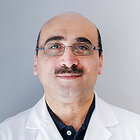Nuclear Medicine
Nuclear medicine involves carrying out examinations and providing diagnostic and therapeutic surveys of the functional parts of the human body such as the organs or vessels using radioactive tracers.
This medical speciality is distinct from other imaging techniques in that the images obtained are physiological (showing the way a system is working) rather than anatomical.
Currently, this department works together with numerous other fields such as oncology, neurology, cardiology, nephrology, pneumology, infectiology, and the various surgical specialities.
The doctors from the Nuclear Medicine Department also cooperate with their colleagues in the Centre Hospitalier Universitaire Vaudois (CHUV) and the Hôpitaux Universitaires de Genève (HUG) for the purposes of research and technical development.
Tests and therapies
The therapeutic activity of the Nuclear Medicine Department of Valais Hospital is carried out on premises that are specially equipped for this very specific type of care. These treatments involve administering a low dosage of a radioactive product to the patient in order to destroy the targeted tissue or tumours. This activity is mainly used in treatments against cancer in the field of oncology.
The Nuclear Medicine Department of Valais Hospital scrupulously complies with the laws and regulations connected to the risks and possible injury incurred by patients, by the population and by employees when ionising radiation is used in medicine and in laboratories. This Department and the Federal Office for Public Health (‘Office Fédéral de la Santé Publique’, OFSP) are constantly working together in order to ensure that optimal safety and quality standards are adhered to.For each test, one or several tracers (combination of a molecule and a radioactive marker) are administered to the patient either by intravenous injection or orally as a liquid or a protected capsule. These tracers have minimal effects on the body, as their dosage is very weak and they only emit sufficient radiation for the exploration being carried out, be it of an organ (kidneys, heart, lung, liver, brain, lymphatic vessels…) or of a condition (some cancers for example). It allows for fast and precise diagnosis. The behaviour and diffusion of the substances administered provide dynamic or static images. These tracers are studied using equipment which allows us to generate images such as a PET scan or a gamma camera.
The tracers are then naturally expelled from the patient’s body, usually via his/her urine. These examinations are carried out in outpatient clinics.

